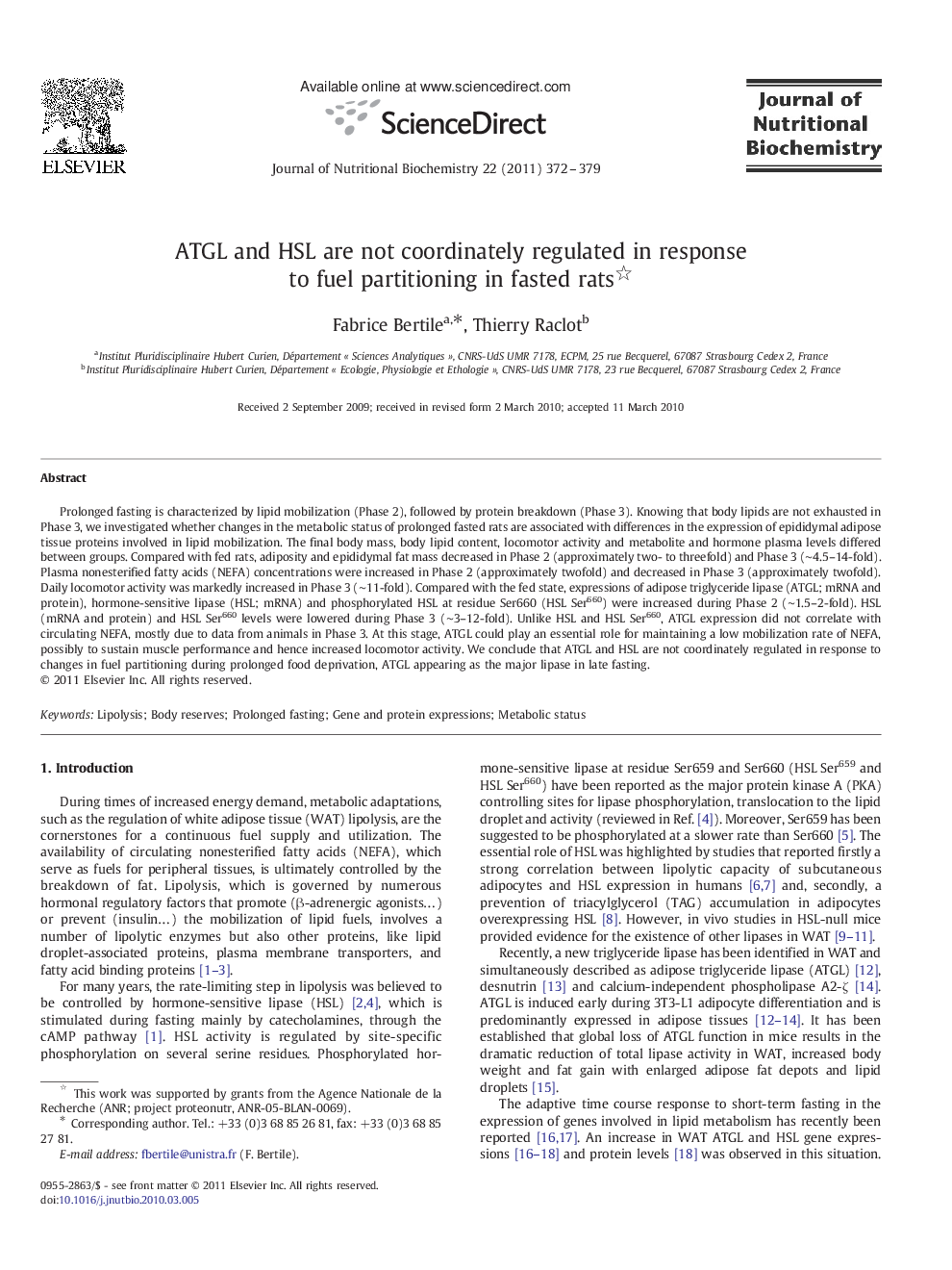| Article ID | Journal | Published Year | Pages | File Type |
|---|---|---|---|---|
| 1990717 | The Journal of Nutritional Biochemistry | 2011 | 8 Pages |
Prolonged fasting is characterized by lipid mobilization (Phase 2), followed by protein breakdown (Phase 3). Knowing that body lipids are not exhausted in Phase 3, we investigated whether changes in the metabolic status of prolonged fasted rats are associated with differences in the expression of epididymal adipose tissue proteins involved in lipid mobilization. The final body mass, body lipid content, locomotor activity and metabolite and hormone plasma levels differed between groups. Compared with fed rats, adiposity and epididymal fat mass decreased in Phase 2 (approximately two- to threefold) and Phase 3 (∼4.5–14-fold). Plasma nonesterified fatty acids (NEFA) concentrations were increased in Phase 2 (approximately twofold) and decreased in Phase 3 (approximately twofold). Daily locomotor activity was markedly increased in Phase 3 (∼11-fold). Compared with the fed state, expressions of adipose triglyceride lipase (ATGL; mRNA and protein), hormone-sensitive lipase (HSL; mRNA) and phosphorylated HSL at residue Ser660 (HSL Ser660) were increased during Phase 2 (∼1.5–2-fold). HSL (mRNA and protein) and HSL Ser660 levels were lowered during Phase 3 (∼3–12-fold). Unlike HSL and HSL Ser660, ATGL expression did not correlate with circulating NEFA, mostly due to data from animals in Phase 3. At this stage, ATGL could play an essential role for maintaining a low mobilization rate of NEFA, possibly to sustain muscle performance and hence increased locomotor activity. We conclude that ATGL and HSL are not coordinately regulated in response to changes in fuel partitioning during prolonged food deprivation, ATGL appearing as the major lipase in late fasting.
